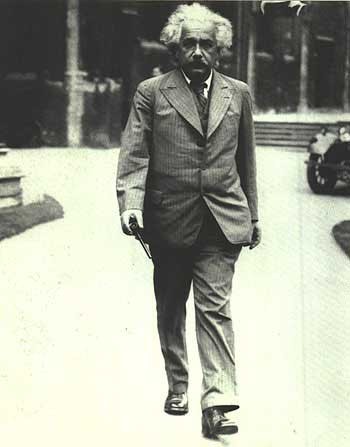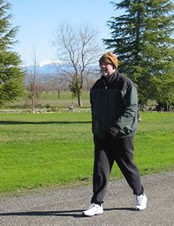Taking a walk a day keeps the doctor away, because both physically and mentally it keeps you fit. The early morning walk is power packed with first rays of the sun which are the reservoir of energy, which is why people who take their morning walks are most energetic, productive and cheerful throughout the day. We all are aware that walking helps from helping lose weight, getting de-stressed to lowering blood pressure and reducing risk of many chronic diseases. Walking shores up your bones. It can stop the loss of bone mass for those with osteoporosis. Walking lowers Alzheimer’s risk. A study from the University of Virginia Health System in Charlottesville found that men between the ages of 71 and 93 who walked more than a quarter of a mile per day had half the incidence of dementia and Alzheimer’s disease, compared to those who walked less.
For women post menopause, 30 minutes of walking each day reduces their risk of hip fractures by 40 percent. Walking supports your joints. The majority of joint cartilage has no direct blood supply. It gets its nutrition from synovial or joint fluid that circulates as we move. Impact that comes from movement or compression, such as walking, squashes the cartilage bringing oxygen and nutrients into the area. If you don’t walk, joints are deprived of life-giving fluid, which can speed deterioration. Just a caution for what is called a brisk walk: it is a relative term, since “brisk” for some, is either slow or quite speedy for others, depending on levels of fitness. One measure to quantify brisk walking is “steps per minute,” and 100 steps per minute is considered moderate intensity or brisk walking. A precious advice to all is: listen to your body, your body keeps giving the signal for slowing down, warming up or speeding up.
Walking is free, all it requires a good pair of shoes. Besides great physical benefits, walking improves creativity in human.
Steve Jobs, the late co-founder of Apple, was known for his walking meetings. Jobs used to invite people to walk with him, various matters were discussed during the walk and post walk decisions were informed to the concerned people. Facebook’s Mark Zuckerberg has also been seen holding meetings on foot because he believes that pacing back and forth on occasion has tremendous good ideas coming to mind. A new study by Stanford researchers provides an explanation for this. Creative thinking improves while a person is walking and shortly thereafter. The study found that walking indoors or outdoors similarly boosts creative inspiration. The act of walking itself, and the environment is the main factor. The study found that creativity levels are consistently and significantly higher for those walk compared to those who simply sit. Walking helps improve learning, memory and cognition.
Albert Einstein the great theoretical physicist and father of modern physics, who was also a prolific writer of non-scientific work, often felt like he needed to take a long walk on the beach to introspect and work out complex problems in his head. He was advised by his doctors in the late 18th century that living by the beach to improve overall health. Einstein used to love his beach walks, because it helped to solve a lot of complex problem.
Friedrich Nietzsche is known as one of Western culture’s most influential philosophers. And he did much more than just philosophize. He was also an accomplished classical scholar, professor, poet and avid author. The secret of his creativity was – he used to walk each day and during those walks he used to get inspirational thoughts, on which he created classical writing.
Charles Dickens is known for his attention to detail in his lengthy novels. A lesser known fact is how Dickens got to know London inside and out- twenty-mile-long speed walks in the middle of the night! His walks served him for more than data-gathering. Dickens claimed that writing didn’t come easy to him and it put him under immense stress. He would go on five-hour-long walks to relieve this anxiety. His walks grew so long that his friends thought he was mentally ill. After writing from 9 in the morning to 2 in the afternoon, he would go for a long walk almost a 20- or 30-miles. This was routine for him. When Dickens couldn’t sleep at night, which used to happen frequently, he would go strolling on London’s streets until dawn. Dickens walked so much that his worried friends felt he had a mania for walking. But clearly, the walking worked; Dickens was prolific, writing more than a dozen major and well-regarded novels, several short story collections, a few plays, and even some non-fiction books.
Aristotle, the famous Greek philosopher, empiricist, and pupil to Plato, conducted his lectures while walking the grounds of his school in Athens. His followers who quite literally followed him as he walked were even known as the travelers. Really, it’s so inspiring to know the great minds utilized the cognitive benefits of walking while thinking, and it’s so incredible. Imagine walking with your teacher, while listening to his teaching.
It’s so very inspiriting to know that the poet William Wordsworth walked nearly 175 thousand miles throughout his life while preserving a prolific writing career! He managed these two seemingly opposing habits for two reasons. First, for writing poems requires shorter time than novels but poems require rhythm, which he would get with his style of walk with a tempo. Second, Wordsworth’s walking was writing, in a way, he believed the act of walking was inseparable from the act of writing poetry. Both writing poetry and walking are rhythmic, both acts engaged meter (meter is a unit of rhythm in poetry, the pattern of the beats. It is also called a foot) and walking is counted in the unit of meter. Wordsworth needed to walk in order to write.
Back to importance of walking: a recent study has found that changing the way you walk can change your mood and boost happiness. While it’s long been known that our mood can affect our posture, as people who are sad often slump their shoulders, and those who are happy tend to have a bounce in their step, researchers have found that the reverse is also true. A slumped, sluggish gait might indicate sadness or distress, while someone with a bounce in her step is clearly in high spirits. But after walking for few minutes, mood boosts up.
Just 30 minutes of walk every day can increase cardiovascular fitness, strengthen bones, reduce excess body fat, and boost muscle power and endurance. It can also reduce your risk of developing conditions such as heart disease, type 2 diabetes, osteoporosis, memory loss and some cancers. Research shows that regular walking actually modifies the nervous system so much that the walker experiences a decrease in anger and hostility. Walking helps increasing social life, because you get to know new people around – a neighbor, or a good friend, with whom the interaction helps feel connected. What are you waiting for? Put on your shoes and go for your walk because all truly great thoughts are conceived while walking.

















































